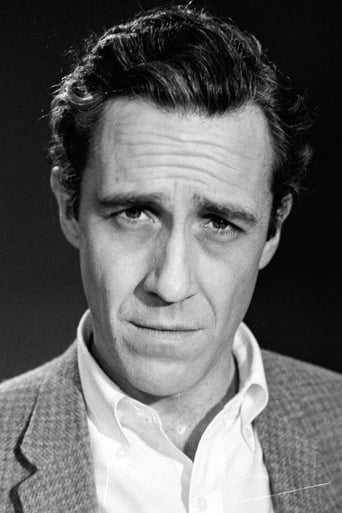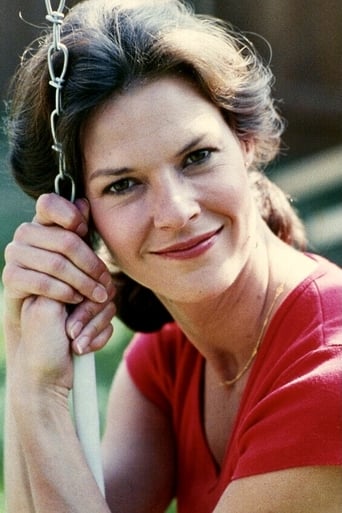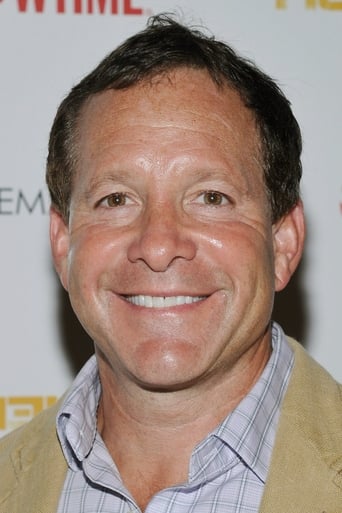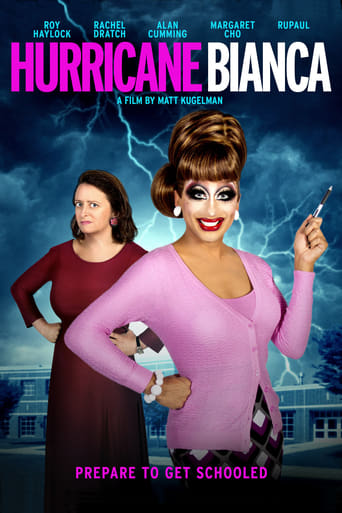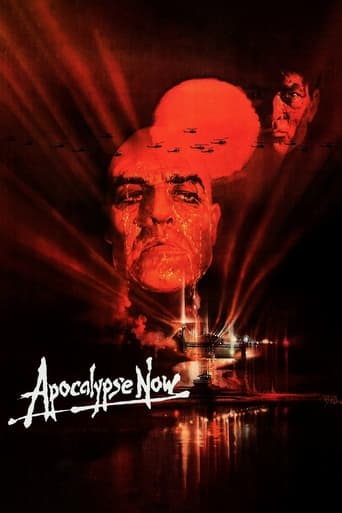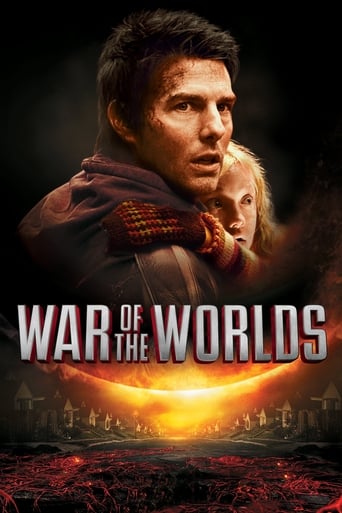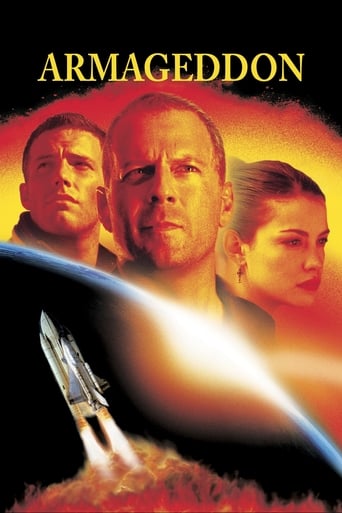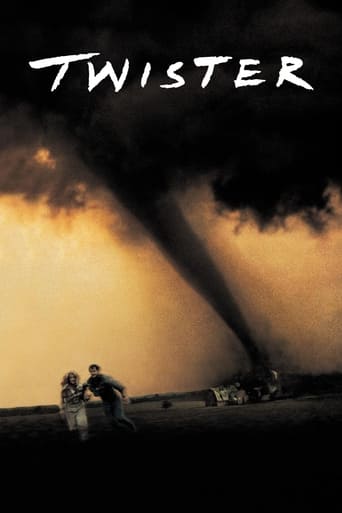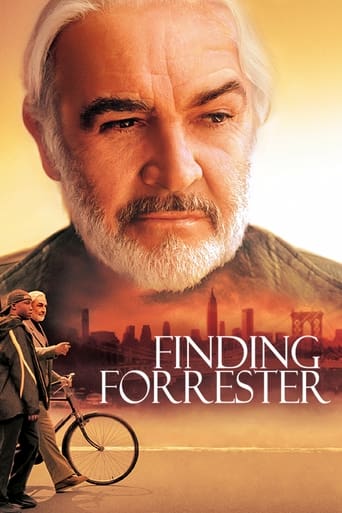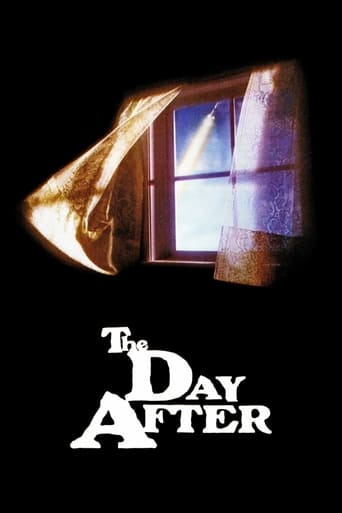
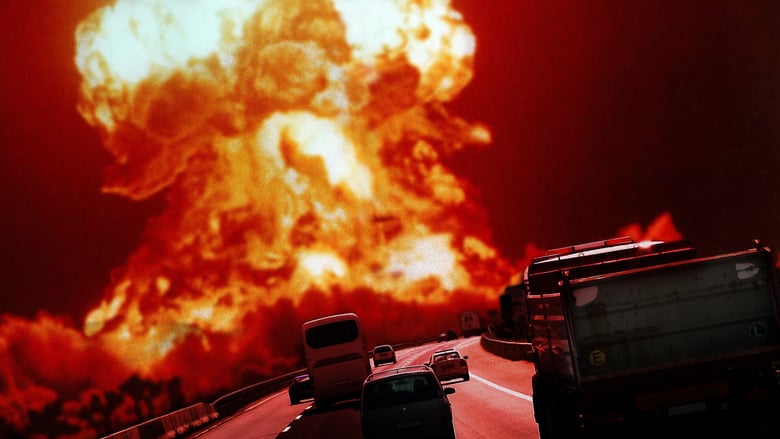
The Day After (1983)
In the mid-1980s, the U.S. is poised on the brink of nuclear war. This shadow looms over the residents of a small town in Kansas as they continue their daily lives. Dr. Russell Oakes maintains his busy schedule at the hospital, Denise Dahlberg prepares for her upcoming wedding, and Stephen Klein is deep in his graduate studies. When the unthinkable happens and the bombs come down, the town's residents are thrust into the horrors of nuclear winter.
Watch Trailer
Cast


Similar titles
Reviews
I was in the USAF stationed in Spain when this came out. I was very interested in this show because I had just left Whiteman AFB about a year earlier. I was disappointed in the realism. Being a "missile troop" at Whiteman, I knew what would happen to the areas where the missile sites were and the importance of the KC metro area. The only way in the world anyone would be able to get from west Missouri to KU med center is if many of the Russian missiles never hit their targets. Those that didn't die in the initial explosions, would die from the blast waves and the EXTREME amount of radiation from all those missiles would kill them in days.
.......I was a full time college student and working full time at a close-to-home service station. Because of the ample TV previews acting as constant reminders of this upcoming TV movie promising to be, "a television event like never before", I brought a small television to work. IIRC, it was a Monday night and the movie started at 8:00 pm. I did NOT want to miss this movie. I had spent many years hearing Air Raid sirens blaring at exactly noon on the first Monday of each month. Any time I saw a movie or documentary dealing with the possibility of nuclear war, I remember also doing, "duck and cover", drills at the public school I attended back in the 60's.I will tell you what I remember most about the night this movie first aired. That night the movie was first shown, we did not sell a single gallon of gas while the movie played. I remember commenting to one of my co-workers, " I would just bet you that this movie would give the Superbowl a run for its' money!"This movie dared to be explicit and it dared to provide as much in the way of historic accuracy predicting the post attack specific, minute details regarding the devastation at ground zero. Even the prediction of resultant property damage x-number of miles from ground zero was shown to be lesser when compared to the damage at ground zero. In other words, I think the makers of this movie did their homework. I would guess that they looked for and acquired ample special topic technical advisor's. Many years later when I was day-dreaming at work taking a moment to have a 1980's flashback, I recall having this movie come to mind. Right there and then, I wrote a note to myself on a carbon-type credit card imprinter paper, "find DVD entitled, "The Day After." Right after that moment, on the same piece of paper I also reminded myself to get the movies, "Dr. Strangelove, and how I learned to stop worrying and love the bomb", "Dawn's early light" and, "Failsafe". Faithfully submitted, A man in his 50's !
Fairly decent nuclear war film. I thought the first hour was the best as we got to know the characters. Then when it all kicked off it did make me feel quite paranoid about the prospect of nuclear war so it was effective in that manner. It is quite a terrifying prospect and watching this film made me realise how easily mistakes can be made and wars can be entered into.However, once the bomb had been dropped I found it became very slow and kind of pointless. I really didn't get much out of it after that point and the bomb is only dropped about half way through. I'm not sure how realistic it was after this point either as everyone seemed to believe they had a chance to survive even if they had already been outside and infected by radiation. I always presumed it was guaranteed death. Certainly by the end of the film there was no suggestion that any of the characters were going to survive. Overall it is effective but I wouldn't want to watch it again due to the second half being a bit dull and very bleak.
"The Day After" is a film of historical value. It shows a good slice of life in middle America during the Cold War. And, of course, its message about war and disaster in the nuclear age is clear. The visuals are excellent. The acting, cinematography, makeup, direction and all technical aspects of the film are very good. It was just six years after this movie came out that the Berlin Wall came down at the start of the collapse of the Soviet Union. By 1983, when this film was made, the Soviets had greatly built up their military armament under Leonid Brezhnev. But even his reign at the head of the USSR (1964-1982) was after the worst scares and threats of nuclear war. The most dangerous time of the Cold War was from its start at the end of WWII – under Josef Stalin, through Nikita Kruschev in October, 1964. Kruschev sent Russian tanks to put down the Hungarian Revolution in November 1956. He was at the helm of the USSR during the Cuban Missile Crisis in October, 1962. And it was during his rule that the Berlin Wall went up, beginning on Aug. 13, 1961. The placing of this movie in the U.S. heartland was significant. It was here that the U.S. had two major defense systems that it hoped would be the greatest deterrents to nuclear war. The first was the Strategic Air Command (SAC) headquartered at Offutt Air Force Base south of Omaha. As the movie noted, that was about 190 miles north of Kansas City. SAC was established in 1946 and was deactivated in 1992, after the fall of the Soviet Union. SAC had several bases around the U.S. with long-range bombers equipped to deliver nuclear bombs to the USSR. And, from 1961 until its end, SAC operated an Airborne Command Post out of Offutt. For the next 30 years, an airborne command center would be aloft over the central U.S. at all times. The first aircraft fitted and used for such duty was the EC-135. By the 1970s, the Air Force acquired B-747s for this task. The airborne command rotated so that the active command aircraft would never be caught on the ground or in the air near any U.S. site that might be a target for Soviet missiles. The second defense system was the installation of some 1,000 Minuteman missiles. These were housed in underground silos across several states – from Montana to Missouri. "The Day After" shows this aspect very well. The Minuteman Missile program began in 1961 and has had three upgrades of replacement missiles. Many of the original sites were abandoned and turned back to landowners after strategic arms reductions. But a decade into the 21st century, the remaining U.S. missile defense force included some 450 third generation Minuteman missiles. Besides these aspects, this film is also of interest to me for personal experiences. After attending college one year, I worked on a survey crew in the summer of 1961 to lay the cable for missile silos in southeast Nebraska. These were Atlas missile sites to protect one of the SAC bases – at Lincoln. That base, since closed, then had 120 long-range bombers. Then, by early 1962, I was a paratrooper stationed in West Germany. The U.S. and NATO were replenishing their military forces that had been allowed to decline after WWII occupation ended in 1957. The rebuilding was triggered when East Germany began putting up the Berlin Wall in 1961. At the same time, the Soviets were increasing their forces along the Czech border. In this movie, that's where the Russians invaded West Germany through the Fulda Gap. In my first months in Germany, we took part in combined military maneuvers and war games along that border. Our units had border guard duty and we laid land mines. We also had the then-secret Davy Crockett tactical nuclear weapons. The movie script has an account of three nuclear devices exploding over Russian troops that had invaded West Germany. It may be hard for people born in the last few decades to grasp the time and circumstances of the Cold War. But, besides our experiences growing up under the very real threat of nuclear war in the 1950s and 1960s, many of us have met people who lived under Soviet oppression. Should we not trust their words and take their warnings to heart about such tyrannies? While serving in Germany, I met another paratrooper who was from Hungary. He had been a student in Budapest during the Hungarian Revolution in the fall of 1956. He had tossed Molotov cocktails at Russian tanks, and later escaped to the West where he joined the U.S. Army. He became a friend and later flew to the U.S. to take his citizenship test, and be sworn in as an American. Calmer, wiser leaders have been the rule among the world's military powers the past few decades. But now we have smaller countries with nuclear capabilities. Pray that reason will continue to outweigh radical ideology so that we never have a nuclear disaster like that in "The Day After."


